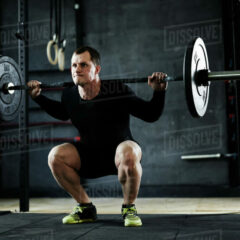Often overlooked in broader fitness conversations, core muscles form the foundation that supports our entire body. They are the central hub that keeps everything connected and moving efficiently. Core muscles include not just the abs but also muscles in your back, hips, and pelvis. Understanding their role can significantly affect your approach to fitness and health.
Integrating core training into your routine impacts everyday activities and physical well-being subtly yet profoundly. From bending to tie your shoes to picking up heavy grocery bags, a strong core makes these tasks easier and safer. An often underappreciated fact is how core strength is vital in enhancing our athletic capabilities and daily functional movements.
Core training offers benefits regardless of age or fitness level. For young athletes, developing these muscles can prevent injuries and enhance performance. For older adults, maintaining core strength supports balance and reduces fall risks. It’s remarkable how universal its benefits are, making it a crucial element for everyone from beginners to seasoned fitness enthusiasts.
Unlike traditional abdominal workouts, which focus solely on aesthetic appeal, core training emphasizes functionality and stability. Exercises often encompass a broader range of movements and muscles, leading to a more balanced physique. Core training’s real magic lies in its ability to improve overall body coordination without the need for heavy equipment or complex routines.
Strength, Stability, and Beyond: The Tangible Benefits of Core Training
Building core strength isn’t just about having toned abs; it’s the cornerstone of improving your physical capabilities. By engaging your core, you enhance your athletic performance across various sports, whether sprinting faster, throwing a punch harder, or swinging a golf club more precisely.
Building a strong core is vital for minimizing injury risk. It significantly improves balance and supports proper alignment, particularly during dynamic movements, making every activity safer and more efficient. Prioritizing core stability enhances performance and safeguards health. Think about the stability required when you change direction quickly or lift something heavy—your core does most of the work to keep you safe.
Beyond safeguarding from injuries, core training can significantly improve posture. Good posture makes you look more confident and prevents chronic back pain that often stems from imbalanced core muscles. Strengthening this area promotes a natural alignment that supports better spinal health.
A robust core aids more than just movement efficiency; it boosts breathing effectiveness and helps regulate metabolic functions. When your core muscles are strong, they support the diaphragm properly, leading to better breathing patterns and improved oxygen flow and endurance.
Engaging in core exercises is essential, as they significantly boost balance and mobility, making everyday activities easier and more enjoyable. Core exercises provide the control needed to stabilize your body during various activities, reducing the chances of falls or missteps. This is particularly crucial for older adults or those recovering from injury, where stability is often compromised.
Core Training for Different Fitness Goals: Tailoring Techniques for Success
Crafting a core training routine to meet specific fitness goals is all about understanding what you aim to achieve. For those focusing on weight management, integrating core exercises can boost calorie burn and increase muscle tone, complementing cardio and strength training efforts.
Athletes often benefit from sports-specific core exercises that enhance skills critical to their performance. Whether a tennis player improves rotational power or a sprinter boosts explosive starts, targeted core workouts can be game changers.
In rehabilitation settings, core training is adjusted to accommodate injury recovery. Gentle, controlled movements help rebuild strength without overstraining the body, laying the groundwork for full recovery.
Incorporating core work into varied fitness regimes is beneficial for everybody. For example, core-focused yoga enhances flexibility while strengthening, and high-intensity interval training (HIIT) uses dynamic core exercises for a robust workout.
The mental benefits shouldn’t be overlooked. A good core workout can also be a mental release, lowering stress levels and sharpening focus. Engaging your core muscles boosts blood circulation and releases feel-good endorphins, resulting in an uplifted mood and sharper focus. Make it a part of your routine for a happier, more productive day!
Getting Started: How to Effectively Incorporate Core Training into Your Routine
Introducing core exercises into your routine can be straightforward, with some foundational moves making a big difference. Planks, bridges, and Russian twists are versatile exercises that you can perform almost anywhere and require little to no equipment. Embrace this convenient workout to strengthen your core effectively!
Safety is key. Kick off your fitness journey with exercises tailored to your current level. Focusing on proper form will unlock maximum benefits while safeguarding yourself against injuries. Partnering with a fitness professional can deliver tailored guidance to enhance your core training experience, especially if you’re starting.
Creating a core training schedule that blends seamlessly with your existing workouts can optimize results. Aim for a balanced routine that combines core exercises with cardio and strength training to achieve optimal fitness. This comprehensive approach ensures you develop strength, endurance, and overall health.
There is a lot of misleading information out there, so it’s crucial to sort core myths from facts. Core training isn’t about endless sit-ups or quick fixes—it’s about consistency and technique, focusing on quality over quantity.
Exploring innovative tools and technologies can spice up your core routine. Resistance bands, stability balls, and even mobile fitness apps offer new challenges to keep things engaging and effective. Each tool adds variety, helping prevent burnout and keeping you motivated as you progress.
